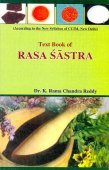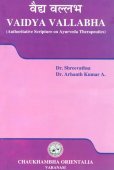Traya: 14 definitions
Introduction:
Traya means something in Hinduism, Sanskrit, Marathi, Hindi. If you want to know the exact meaning, history, etymology or English translation of this term then check out the descriptions on this page. Add your comment or reference to a book if you want to contribute to this summary article.
Alternative spellings of this word include Tray.
In Hinduism
Purana and Itihasa (epic history)
Source: Cologne Digital Sanskrit Dictionaries: The Purana IndexTraya (त्रय).—Group of three: varṇa loka, etc.*
- * Vāyu-purāṇa 97. 33.

The Purana (पुराण, purāṇas) refers to Sanskrit literature preserving ancient India’s vast cultural history, including historical legends, religious ceremonies, various arts and sciences. The eighteen mahapuranas total over 400,000 shlokas (metrical couplets) and date to at least several centuries BCE.
Languages of India and abroad
Marathi-English dictionary
Source: DDSA: The Molesworth Marathi and English Dictionarytraya (त्रय).—n S An aggregate of three, a triad or trio.
Source: DDSA: The Aryabhusan school dictionary, Marathi-Englishtraya (त्रय).—n trayī f An aggregate of three, a trio; used esp. of the three Vedas collectively.
Marathi is an Indo-European language having over 70 million native speakers people in (predominantly) Maharashtra India. Marathi, like many other Indo-Aryan languages, evolved from early forms of Prakrit, which itself is a subset of Sanskrit, one of the most ancient languages of the world.
Sanskrit dictionary
Source: DDSA: The practical Sanskrit-English dictionaryTraya (त्रय).—a. (-yī f.) Triple, threefold, treble, divided into three parts, of three kinds; त्रयी वै विद्या ऋचो यजूंपि सामानि (trayī vai vidyā ṛco yajūṃpi sāmāni) Śat. Br.; Manusmṛti 1.23.
-yam A triad, a group or collection of three; अदेयमासीत्त्रयमेव भूपतेः शशिप्रभं छत्रमुभे च चामरे (adeyamāsīttrayameva bhūpateḥ śaśiprabhaṃ chatramubhe ca cāmare) R.3.16; लोकत्रयम् (lokatrayam) Bhagavadgītā (Bombay) 11.2,43; Manusmṛti 2.76.
Source: Cologne Digital Sanskrit Dictionaries: Shabda-Sagara Sanskrit-English DictionaryTraya (त्रय).—nf. (-yaṃ-yī) 1. The third. 2. (In composition) Tree, as guṇatrayaṃ the three properties. E. tri, ayac aff.
Source: Cologne Digital Sanskrit Dictionaries: Benfey Sanskrit-English DictionaryTraya (त्रय).—i. e. tri + a, I, adj., f. yī, Threefold, [Mānavadharmaśāstra] 1, 23. Ii. f. yī, 1. The three Vedas, [Mānavadharmaśāstra] 4, 125. 2. Triad, [Rājataraṅgiṇī] 5, 143 (śata-, Three hundreds). Iii. n. Triad, [Daśakumāracarita] in
Traya (त्रय).—[feminine] ī triple, threefold; [neuter] a triad; [feminine] trayī the same ([especially] the three Vedas); trayī vidyā the threefold knowledge ([ritual or religion]).
Source: Cologne Digital Sanskrit Dictionaries: Monier-Williams Sanskrit-English Dictionary1) Traya (त्रय):—mf(ī)n. ([from] tri, [Pāṇini 5-2, 43]) triple, threefold, consisting of 3, of 3 kinds, [Ṛg-veda x, 45, 2; Atharva-veda iv, 11, 2; Vājasaneyi-saṃhitā] etc. (yī vidyā), ‘the triple sacred science’, reciting hymns, performing sacrifices, and chanting ([Ṛg-veda], Yv., and Sv.), [Śatapatha-brāhmaṇa; Aitareya-brāhmaṇa] etc.
2) n. a triad (chiefly ifc.), [Chāndogya-upaniṣad; Kaṭha-upaniṣad; Manu-smṛti] etc.
Source: Cologne Digital Sanskrit Dictionaries: Yates Sanskrit-English DictionaryTraya (त्रय):—[(yaṃ-yī)] 1. n. 3. f. The third.
Source: DDSA: Paia-sadda-mahannavo; a comprehensive Prakrit Hindi dictionary (S)Traya (त्रय) in the Sanskrit language is related to the Prakrit word: Taya.
[Sanskrit to German]
Sanskrit, also spelled संस्कृतम् (saṃskṛtam), is an ancient language of India commonly seen as the grandmother of the Indo-European language family (even English!). Closely allied with Prakrit and Pali, Sanskrit is more exhaustive in both grammar and terms and has the most extensive collection of literature in the world, greatly surpassing its sister-languages Greek and Latin.
Hindi dictionary
Source: DDSA: A practical Hindi-English dictionaryTraya (त्रय) [Also spelled tray]:—(a) three; (nm) the number three.
...
Kannada-English dictionary
Source: Alar: Kannada-English corpusTraya (ತ್ರಯ):—[noun] a set or group of three things, persons, etc.
Kannada is a Dravidian language (as opposed to the Indo-European language family) mainly spoken in the southwestern region of India.
See also (Relevant definitions)
Starts with (+38): Traya Rishi, Trayadha, Trayah, Trayahpancashat, Trayahpanchashat, Trayahsaptati, Trayahshashti, Trayahshatashatardha, Trayaka, Trayaman, Trayamana, Trayamane, Trayamani, Trayamanika, Trayamayi, Trayambaka, Trayambakavrata, Trayamsha, Trayana, Trayanga.
Ends with (+154): Acaratraya, Adatraya, Agnitraya, Ahastraya, Ahoratratraya, Ajnanatraya, Akaratraya, Aksharatraya, Akshitraya, Akshyatraya, Amatraya, Amitraya, Anamestraya, Anjanatraya, Ashtamitraya, Astraya, Asutraya, Atmatraya, Atraya, Avasthatraya.
Full-text (+276): Taya, Trayahsaptati, Trayas, Trayahshashti, Trayodasha, Shaktitraya, Trayastrimshati, Trayahpancashat, Trayashcatvarimshat, Phalatraya, Trayonavati, Trayovimshati, Katukatraya, Trayah, Tri, Trayastrimshin, Trayastrimshatsammita, Trayastrimsha, Trayastrimshastoma, Trayastrimshadakshara.
Relevant text
Search found 88 books and stories containing Traya; (plurals include: Trayas). You can also click to the full overview containing English textual excerpts. Below are direct links for the most relevant articles:
Garga Samhita (English) (by Danavir Goswami)
Verse 3.10.5 < [Chapter 10 - The Glory of Śrī Girirāja]
Verse 4.14.10 < [Chapter 14 - The Story of the Jālandharīs]
Verse 6.19.36 < [Chapter 19 - In the First Fortress of Dvārakā, the Glories of Līlā-sarovara, etc.]
Rig Veda (translation and commentary) (by H. H. Wilson)
Amarakoshodghatana of Kshirasvamin (study) (by A. Yamuna Devi)
Three types of Dance < [Chapter 4 - Cultural Aspects]
Shrimad Bhagavad-gita (by Narayana Gosvami)
Verse 16.21 < [Chapter 16 - Daivāsura-sampada-yoga]
Verse 11.20 < [Chapter 11 - Viśvarūpa-darśana-yoga (beholding the Lord’s Universal Form)]
Maha Prajnaparamita Sastra (by Gelongma Karma Migme Chödrön)
The Abhavya-sūtra < [Part 1 - Eliminating the three poisons]
Puṇyakriyāvastu: preliminary note < [Part 5 - Establishing beings in the puṇyakriyāvastus]
Preliminary note on the three meditative stabilizations (samādhi) < [Class 1: The three meditative stabilizations]
Bhakti-rasamrta-sindhu (by Śrīla Rūpa Gosvāmī)
Verse 2.4.1 < [Part 4 - Transient Ecstatic Disturbances (vyābhicāri-bhāva)]
Verse 2.5.74 < [Part 5 - Permanent Ecstatic Mood (sthāyī-bhāva)]
Verse 2.4.193 < [Part 4 - Transient Ecstatic Disturbances (vyābhicāri-bhāva)]
Related products



